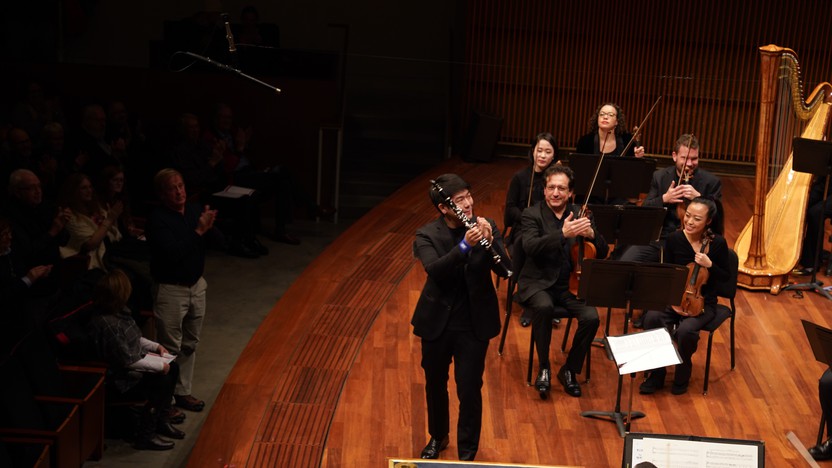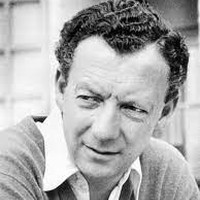Sang Yoon Kim Plays Mozart’s Clarinet Concerto



Benjamin Britten had a precocious start in music, studying piano and viola and composing hundreds of works by the time he was a teenager. At fourteen, Britten’s viola teacher introduced him to the composer Frank Bridge, who agreed to give Britten private lessons. “I, who thought I was already on the verge of immortality, saw my illusions shattered,” Britten later wrote about his course of study with Bridge, a demanding teacher who fostered the rigorous technique needed to round out Britten’s natural inventiveness.
Bridge’s name mostly arises now thanks to the tribute composed by his pupil in 1937. Britten accepted the commission on very short notice from the Boyd Neel Orchestra, which desperately needed a new English piece to play at the prestigious Salzburg Festival. The orchestra had already performed Britten’s Simple Symphony for Strings, making the young composer a natural choice. Britten obliged by writing the Variations on a Theme of Frank Bridge in less than a month.
The source material, taken from Bridge’s Three Idylls for string quartet from 1906, is just the slightest wisp of a melody, which Britten expanded into a set of free variations. Coming out of the dramatic introduction, a chord sustained under a series of plucks reveals itself as the start of the theme. Each brief variation highlights a particular aspect of Bridge’s personality, as outlined by Britten: the Adagio corresponds to “his depth,” the March “his energy,” and the Romance “his charm.” The next three movements drift toward parody, with a Gioachino Rossini-inspired Aria Italiana (“his humor”), a neo-Baroque Bourrée classique with prominent violin solos (“his tradition”), and an irreverent Viennese Waltz (“his enthusiasm”). A fiery Perpetual Motion (“his vitality”) clears the air for the haunting Funeral March (“his sympathy”) and the ethereal Chant (“his reverence”). The work closes with a Fugue and Finale, a testament to Bridge’s “skill and dedication.”
Aaron Grad ©2022

The music that Mozart wrote for his friend Anton Stadler, a clarinetist and fellow freemason, was instrumental in establishing the clarinet as an equal to its older cousins in the woodwind family. Mozart’s first composition for Stadler was the Kegelstatt Trio from 1786, scored for clarinet, viola and piano. (Mozart played the viola part himself.) Next came a quintet for clarinet, two violins, viola and cello, completed in 1789. This work required a basset clarinet in the key of A, an instrument with a low-range extension designed by Stadler. Mozart went on to write Stadler a concerto featuring the same instrument, completed two months before the composer’s untimely death.
The Clarinet Concerto in A Major demonstrates Mozart’s keen understanding of the solo instrument’s range and agility, especially when rendered on a replica of the original basset clarinet, as in this performance. (To play the concerto on a modern clarinet, the player must transpose certain passages into higher octaves.) The tonal quality of the clarinet changes through its range, from the deep resonance of the extended bass notes, through the warm and hollow midrange of the chalumeau register, and up into the brilliant clarity of the highest octaves. At certain points in the fast opening movement, the soloist seems to play several opera characters engaged in dialogue, leaping from range to range; other times, a single scale or arpeggio journeys across all four octaves of the instrument’s compass.
In 1785, a critic wrote of Anton Stadler, “One would never have thought that a clarinet could imitate the human voice to such perfection.” Judging by the slow movement penned expressly for Stadler, Mozart surely agreed!
The finale has a bit of Haydn’s sense of humor in it, as in the playful held notes of the main theme that draw out unresolved tension. The episodic structure of the Rondo allows for fanciful and dramatic excursions, making each return to the familiar music all the more delightful.
Aaron Grad ©2017
Get driving directions and find nearby parking.
Find dining options close to the venue.
View seating charts to find out where you'll be seating.
Get driving directions and find nearby parking.
Find dining options close to the venue.
View seating charts to find out where you'll be seating.
